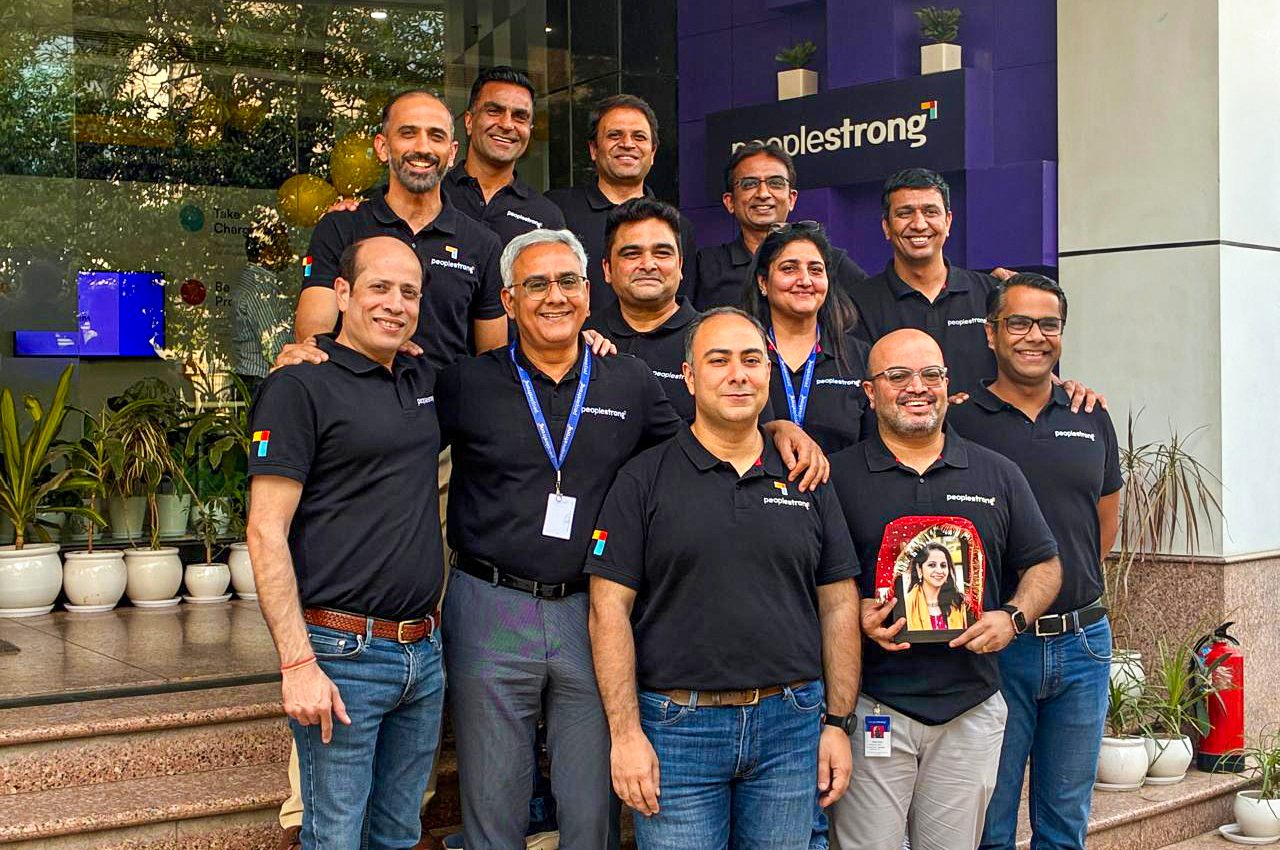American real estate developer Steve Wynn once said, “Human Resources isn’t a thing we do. It’s the thing that runs our business.” And he wasn’t wrong. Without HR teams, companies would be in chaos—no hiring process, no structure, no culture to hold everything together.
But here’s the catch: HR teams don’t just keep things running, they also need to stay ahead. New HR trends are shaping how workplaces function, and if you’re not keeping up, you’re already behind.
In this blog, we’ll explore the latest HR trends redefining work in 2025—what’s changing, what’s staying, and how you can stay prepared.
We will also understand how HR Tech 4.0 enables businesses to adapt to rapidly changing work environments, boost employee engagement, make data-driven decisions about talent acquisition and retention, and more.
Why Keeping Up with HR Trends is Important
HR is evolving faster than ever. What worked a few years ago might not be enough to attract, retain, and manage talent today. Staying updated with the latest HR trends ensures businesses remain competitive and future-ready.
Attracting the Best Talents
Advanced techniques in recruitment marketing enhance the effectiveness of talent acquisition and employee retention. Professionals today have more choices, and opting not to follow the changes can make recruitment much harder and lead to worse retention rates.
Promoting Positive Employee Relations and Retention
Companies that communicated a formal employee listening strategy were found to be 1.9x more likely to develop strong employee leaders and 1.5 times more likely to provide an excellent employee experience.
Firms that focused on employee engagement provided flexible working options, and invested in leadership training have reported lower employee turnover and greater employee satisfaction.
Shifting Workforce Demographics
There is an increased demand for increasing skills in hybrid work programs and well-being programs. The data indicate that 78% of organizations reported challenges in forming and developing leaders due to heavy workloads and insufficient management training.
HR managers need to work towards easier, defined expectations from managers and create scalable training programs to ensure an employable workforce.
Ensuring Compliance and Reducing Risk
Ensuring compliance is more important than ever due to the various labor laws, DEI-related issues, and new regulations regarding payment transparency.
Following all the latest HR trends ensures that organizations are legally compliant and facilitates an equitable environment.
7 Trends You Should Look Out For
As we move into 2025, new HR trends focus on personalization, well-being, and strategic talent management. Here’s what’s shaping the future of HR:
1. Employee Experience 2.0: More Than Just Perks
Gone are the days when a ping-pong table and free snacks were enough to keep employees engaged. The latest HR trends show that employees expect more from their workplaces—well-being, career growth, and flexibility. Companies that fail to address these areas risk high turnover and disengaged teams.
The new key trend in HR is scaling personalization. Employment data is now used in AI HR tools to create individualized career paths, training, and even benefits.
Personal health improvement initiatives are equally important as financial and emotional health initiatives. In addition to physical benefits, emotional and financial wellness initiatives are gaining prominence.
Examples:
1. PwC provides financial coaching services for effectively managing student debt and retirement savings. Besides, mental health support, such as therapy sessions fully funded by the employer, has become standard practice rather than an add-on benefit.
2. Wider adoption of hybrid work arrangements includes four-day workweeks and flexible working hours. Companies such as Spotify and Airbnb have adopted a “work anywhere” strategy where employees choose their preferred locations for work.
3. Salesforce encourages employees to engage in advanced active learning modules and mentorships, allowing them to apply their skills and aspirations through AI career development tools.
2. The Rise of AI and Automation in HR
AI and automation are reshaping HR faster than ever. The latest HR trends show AI-driven recruitment, workforce planning, and data analytics playing a crucial role in decision-making. Companies that integrate AI into HR processes streamline operations and enhance employee experience—all this while reducing attrition and making smarter hiring decisions.
Predictive analytics is one of the most impactful applications of AI in HR. By analyzing workforce trends, companies can anticipate talent shortages, identify flight risks, and develop proactive retention strategies.
Example:
IBM uses AI to predict employee turnover with 95% accuracy, allowing HR teams to act before valuable employees leave.
Automation is also transforming HR workflows. AI-powered chatbots, like PeopleStrong’s Jinie, are taking over repetitive tasks and improving HR efficiency. With the Jinie chatbot, you get:
- Personalized Talent Coaching: Recommends courses based on an employee’s career path and skills
- Integrated Productivity Boost: Syncs with Outlook or Gmail to help plan daily tasks
- 24/7 HR Support: Provides instant access to leave balances, policies, and payroll details
- Automated Query Handling: Resolves HR inquiries and processes tickets without human intervention
- Continuous Engagement Monitoring: Collects real-time employee feedback and sentiment analysis
- AI-Driven Recruiting: Screens resumes and shortlists top candidates faster
Beyond chatbots, automation is redefining trends in HR management by enabling AI-driven decision-making in areas like performance tracking, workforce planning, and compliance management.
3. The New Era of Workforce Upskilling and Reskilling
The rise of automation and AI is redefining job roles, making continuous learning a necessity rather than an option. Companies are now moving beyond traditional training programs and investing in upskilling and reskilling initiatives to future-proof their workforce.
Automation is displacing certain roles while simultaneously creating demand for new skills. Companies that fail to prepare employees for these shifts risk losing competitiveness.
Examples:
Leading firms are already acting. For instance:
- Amazon pledged $700 million to upskill 100,000 workers, offering cloud computing and AI training through programs like AWS Training & Certification.
- PwC committed $3 billion to upskill 275,000 employees, integrating digital tools and classroom training.
- IBM is leveraging AI to reskill workers, focusing on “New Collar” jobs that require digital and technical literacy.
HR’s role has evolved to build a culture of continuous learning, ensuring employees have access to skill-building resources tailored to their needs. HR Tech 4.0 solutions now play a major role in personalized career development and AI-driven learning paths. Platforms like PeopleStrong offer:
- Customized Learning Paths: AI-driven recommendations based on role, career goals, and industry trends
- Real-Time Skill Gap Analysis: Identifies future workforce needs and suggests targeted training
- Integrated Career Progression Tools: Maps out internal mobility opportunities for employees
- Automated Training Management: Tracks learning milestones and nudges employees to complete courses
4. Hybrid and Remote Work Models Are Here to Stay
Remember when companies thought remote work was just a temporary fix? Turns out, it wasn’t. What started as an emergency response has become a non-negotiable demand from employees.
Some companies tried pulling people back to the office full-time. However, a lot of them resulted in higher attrition rates and employees openly rejecting rigid policies.
Many companies are adapting—instead of debating office attendance, they’re refining virtual onboarding, remote performance tracking, and digital collaboration tools to make flexibility work for everyone.
How HR is Making Hybrid Work, Work
Virtual Onboarding, But Smarter
Companies are moving beyond dull PDFs and Zoom intros. AI-driven platforms customize onboarding based on role, location, and even personal learning styles. New hires don’t just get trained; they get immersed in company culture from day one.
Remote Performance Tracking Without Micromanaging
Forget hovering managers and productivity paranoia. The latest HR trends show AI-powered analytics can assess output, collaboration, and even employee well-being, ensuring that success isn’t just about hours logged but actual impact.
Collaboration Without Chaos
Tools like AI-driven scheduling assistants and digital workspaces (think Slack or Asana) are streamlining remote teamwork, ensuring that projects don’t stall just because people aren’t in the same room.
5. Diversity, Equity, and Inclusion (DEI) as a Business Strategy
Diversity, Equity, and Inclusion (DEI) is more than just a catchphrase businesses use; it packs a crucial punch. Most recent HR trends suggest that organizations focusing on DEI are more likely to get quality employees, encourage innovation, and increase employee engagement.
“Data-driven” recruiting practices are changing the way talent is sourced and hired in a big way. AI and data-driven systems would remove the bias during the screening phase and improve hiring equity.
Research shows that 67% of job seekers prefer to work for a company that advocates for a diverse workforce. This statistic is a natural motivator for organizations to reassess their talent approaches.
6. Data-Driven HR: Leveraging Analytics for Smarter Decisions
It’s no longer just a gut feeling—today, HR teams have to make informed decisions. Workforce analytics is revolutionizing the process of hiring, employee retention, and employee experience into a much more insight-driven process.
Companies have started tracking performance metrics in real-time and analyzing staff sentiments to assess happiness and identify attrition risks. AI can now flag disengagement much earlier than exit interviews, giving HR specialists a head start to make the necessary changes.
AI-powered HR analytics helps overcome bias in hiring decisions. An organization’s decisions on recruitment, promotions, and pay equity based on trends are surely aided by balance and fairness.
PeopleStrong’s HR Tech 4.0 arms organizations with:
- Retention of talents through predictive analytics
- Measuring employee engagement through real-time insights
- Improving productivity through AI-generated performance analytics
7. HR Tech: The Backbone of Future-Ready Organizations
HR is no longer just about people—it’s about technology-driven efficiency. The latest HR trends show a massive shift toward integrated, cloud-based HR solutions that streamline everything from payroll to talent management.
Enterprises are ditching outdated systems in favor of AI-powered platforms that automate workforce planning, recruitment, and employee engagement. With hybrid work becoming the norm, companies need scalable, digital-first solutions to manage global teams.
PeopleStrong’s HR Tech 4.0 is at the forefront of this revolution, offering an end-to-end, AI-driven HR ecosystem that simplifies complex workforce challenges. Here’s what sets it apart:
- Cloud-Based Payroll and Workforce Automation: Guarantees seamless payroll processes, including automated tax filing, absence and leave monitoring, and enhanced payroll processing — all with one click
- AI-Driven Talent Acquisition and Management: Uses algorithms to recruit and assign employees based on pre-set skills, previous experiences, and performance metrics to best optimize firm potential
- Personalized Career Development: Employees proactively upskilling and growing within the organization is facilitated through AI-enhanced career development and machine learning-based educational courses
- Seamless Integrations: Break free from business silos by providing a highly connected HR infrastructure without interrupting the day-to-day tasks of employees by using over 100 integrations such as HRIS, CRM, and helpdesk tools
Companies like Raymonds, Tata Motors Finance, and Inspiro have leveraged PeopleStrong’s HR Tech 4.0 to enhance employee engagement, improve efficiency, and drive strategic HR initiatives.
it’s AI-powered analytics, mobile-first HR experiences, or digital collaboration tools, PeopleStrong delivers the agility needed for modern workforce management.
The Future of HR: Adapt or Fall Behind
The latest HR trends clarify one thing: employee—centric, AI-driven strategies are the future. Companies that prioritize workforce analytics, automation, and DEI will attract top talent and enhance productivity and retention.
HR leaders must embrace new trends in HR to stay competitive. From hybrid work models to AI-powered hiring, innovation is no longer optional—it’s essential for business success. Investing in HR Tech 4.0 ensures agility, smarter decision-making, and a future-proof workforce.
Ready to transform your HR operations? Discover how PeopleStrong’s HR Tech 4.0 can streamline payroll, recruitment, and workforce planning for your organization.
Book a demo today and take the next step toward smarter HR management.














